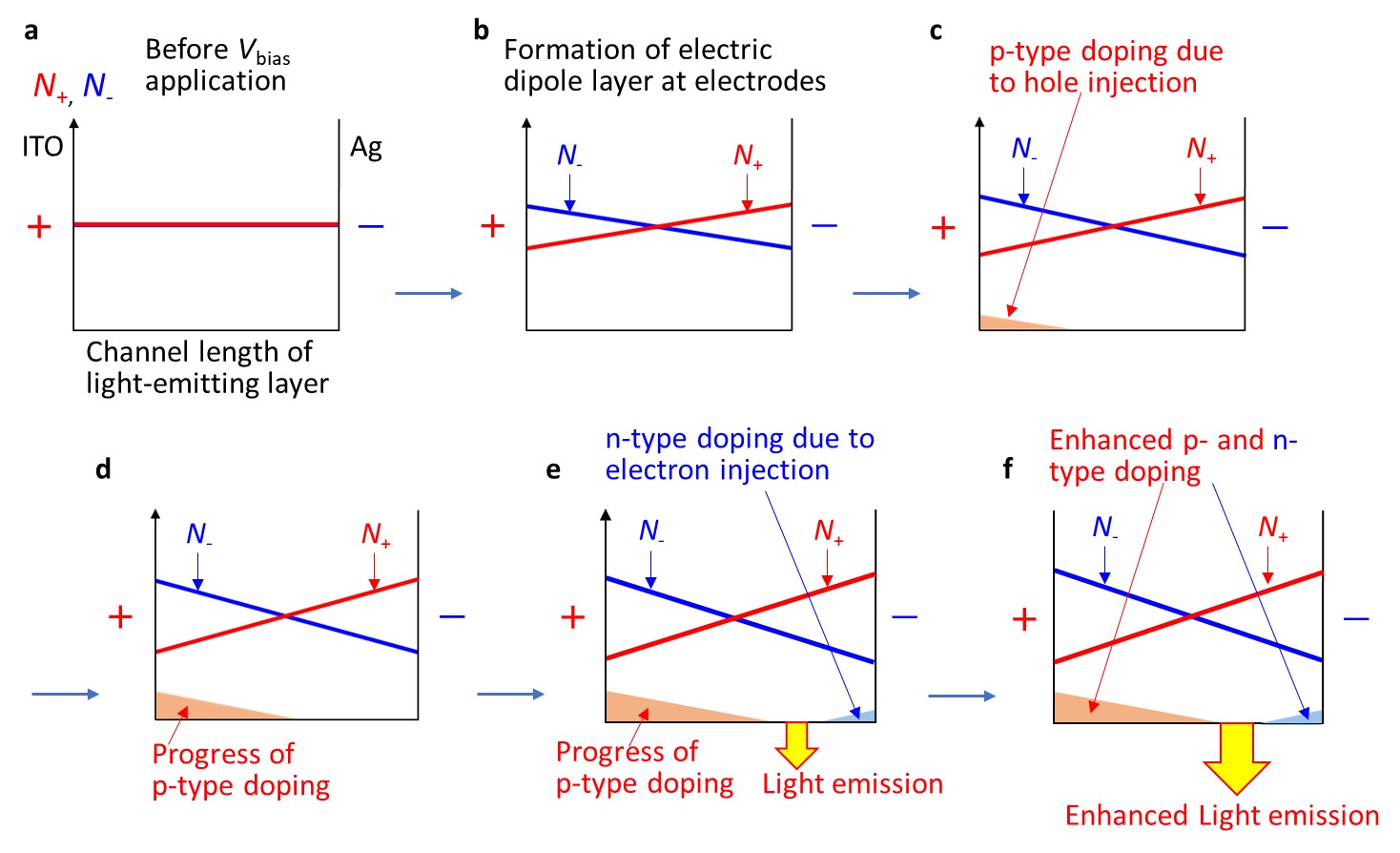Operation Mechanism of Light-emitting Electrochemical Cells: A Cheaper Alternative to Organic Light-emitting Diodes
Published in Electrical & Electronic Engineering

Tsukuba, Japan—Light-emitting electrochemical cells (LECs) are a type of organic light-emitting devices. Compared to organic light-emitting diodes (OLEDs), LECs exhibit a simpler structure, greater flexibility, and can be manufactured at lower costs using the printing technology. Moreover, LECs require lower voltages than OLEDs for operation, making them an appealing prospect for the next generation of energy-saving light-emitting devices. Despite their potential, the microscopic-level functioning of these devices remains unclear, impeding research on their practical applications.
Herein, the researchers investigated LECs made from Super Yellow, a commonly used organic light-emitting material. By employing the electron spin resonance (ESR) method, they examined the spin states of the charges within the LECs during operation. They noted that as the voltage applied to the LECs was increased, emission and ESR increased. Further, theoretical analysis of the observed signals led to the conclusion that the increasing ESR originated from holes and electrons being electrochemically doped (injected) into Super Yellow. Interestingly, the correlation between the progress of this doping and the increase in luminance suggests that as part of the device’s operation mechanism, these doped charges spread across the light-emitting layer.
The techniques developed by this research team provide unprecedented molecular-level insights into the operation mechanisms of LECs. It is anticipated that these insights can help to effectively drive the development of affordable, environment-friendly light-emitting devices.

The work is published in Communications Materials as “Investigating the operation mechanism of light-emitting electrochemical cells through operando observations of spin states” (DOI: 10.1038/s43246-023-00366-3).
Summary: Researchers from the University of Tsukuba have analyzed the operating mechanism of light-emitting electrochemical cells, which are garnering interest as the future of energy-saving light-emitting devices, by employing the electron spin resonance method. They observed a correlation between the advancement of hole and electron injection into organic light-emitting materials and the increase in luminance. This finding implies that as part of the operation mechanism, the injected charges spread across the light-emitting layer.
Follow the Topic
-
Communications Materials

A selective open access journal from Nature Portfolio publishing high-quality research, reviews and commentary in all areas of materials science.
Related Collections
With Collections, you can get published faster and increase your visibility.
Advanced characterizations of high-entropy materials
Publishing Model: Open Access
Deadline: Mar 31, 2026
Multifunctional hydrogels
Publishing Model: Open Access
Deadline: Feb 28, 2026



Please sign in or register for FREE
If you are a registered user on Research Communities by Springer Nature, please sign in